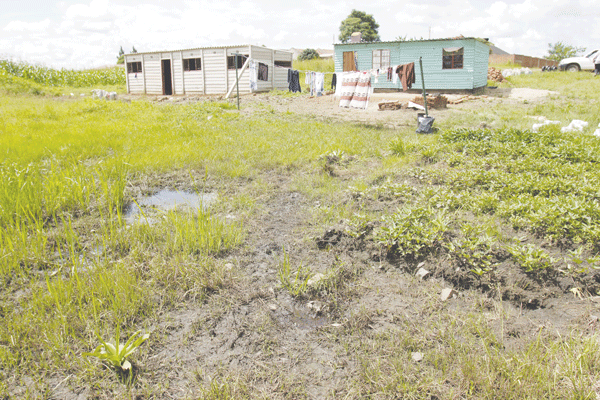
“Build your house in a wetland and you’ve got a hobby for the rest of your life; you will be fighting that water forever.” This piece of advice by Ed Perry in an article entitled Caution: Building in a wetland can be hazardous to your house may be coming a little too late for those that have already built their houses on wetlands.
environment By Chipo Masara

“When wetlands are filled, the water that made them wet has to go somewhere. If it isn’t seeping back into the house built on the former wetland, the water is likely leaking into formally dry homes of downstream property owners,” added Perry.
Those in parts of areas such as Chitungwiza (Unit L, St Mary’s, Zengeza, etc.) and most other settlements mushrooming on wetlands, have had to learn the hard way just what Perry meant in his article.
Unlike many people who would be thanking God for opening up the sky and bringing rain to the country — which has endured extensive droughts characterised by intense unbearable heat — those that have made home on wetlands cannot wait for the rainy season to just be over. The heavy rains that have been pounding lately have left their houses immersed in water. In some instances, the floods make it impossible to even step outside as that would entail literally swimming to safety.
But simply getting soaked may turn out to be the least of their worries. Houses built on wetlands are rarely safe. The report of a Mutare family that lost a child when their house that was built on a wetland collapsed as a result of flooding will attest to that.
According to one constructor, the soil on wetlands is not suitable for building owing to its weak texture. In order for one to build a strong structure on a wetland, the cost of construction would have to more than double as the foundation would require more robust building material.
Ironically, it is people that are generally not so well-to-do — who cannot afford the special foundations necessary if building on wetlands — that have been purchasing the stands clandestinely allocated on such unsuitable water-logged areas.
- Chamisa under fire over US$120K donation
- Mavhunga puts DeMbare into Chibuku quarterfinals
- Pension funds bet on Cabora Bassa oilfields
- Councils defy govt fire tender directive
Keep Reading
But just why, in spite of all the lobbying and campaigning against their destruction, do the wetlands continue to be vandalised?
There is widespread belief that policy inconsistency, coupled with unclear sections of the Environmental Management Act, which land developers that own land falling on wetlands have chosen to “misinterpret” to mean they can do what they please with the land, is to blame.
Some believe the problem is with the Environmental Management Agency (EMA) that is responsible for issuing out Environmental Impact Assessments (EIAs) to land developers. According to the law, no such development should commence on wetlands before an EIA certificate is issued by EMA.
“Most of the EIAs are not up to scratch. You wonder if people that do these EIAs even did Geography at school. They seem to not understand what a wetland even is. The way they are reviewing the EIAs leaves a lot to be desired,” Allain Chimanikire of Mukuvisi Woodlands said two years ago.
“It is quite disturbing to note that after several engagements with the relevant authorities, our wetlands continue to be parcelled out by the city fathers for development, impacting heavily on our wetlands’ ecosystems and functions, while Harare residents continue to suffer and bear the cost of purifying the water from Lake Chivero — a job which our wetlands can do very easily,” he added.
But from the look of things, EMA is also at wits’ end regarding wetland abuse. In the case of Harare, the agency has oftentimes passed on the blame to Harare City Council, which they accuse of selling land on undesignated areas. In fact, EMA has on numerous times fined local authorities responsible for such. However, that has evidently not been enough to stop the developments on wetlands.
Besides EMA, environmentally-inclined organisations such as Environment Africa have been tirelessly working to save what is left of the country’s wetlands. The organisation is, for instance, currently fighting to save the Cleveland Dam catchment area, on which caterpillars started clearing the land towards the end of 2016 in preparation for construction to begin at the ecologically-sensitive Ramsar site.
Whether the fight to save the wetlands and restore them will be won, remains to be seen.
One thing for certain, without help from the wetlands, the country can brace for an even worse water crisis in the near future than the one currently being faced! Already, warnings have been issued by climate change experts informing publics that by the year 2020, there would be serious water scarcity owing to climate change.
For feedback, email [email protected]











